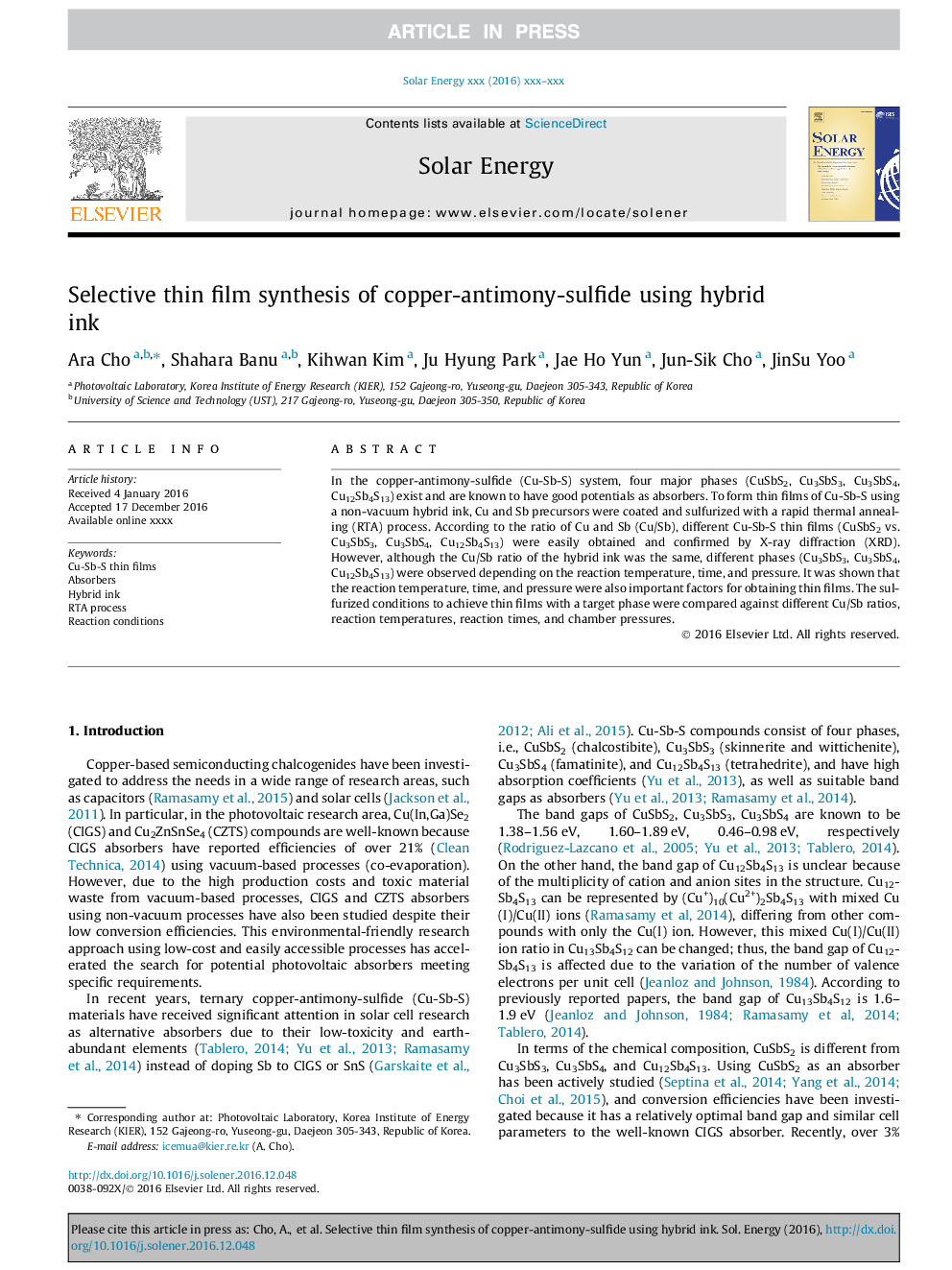| Article ID | Journal | Published Year | Pages | File Type |
|---|---|---|---|---|
| 5451004 | Solar Energy | 2017 | 10 Pages |
Abstract
In the copper-antimony-sulfide (Cu-Sb-S) system, four major phases (CuSbS2, Cu3SbS3, Cu3SbS4, Cu12Sb4S13) exist and are known to have good potentials as absorbers. To form thin films of Cu-Sb-S using a non-vacuum hybrid ink, Cu and Sb precursors were coated and sulfurized with a rapid thermal annealing (RTA) process. According to the ratio of Cu and Sb (Cu/Sb), different Cu-Sb-S thin films (CuSbS2 vs. Cu3SbS3, Cu3SbS4, Cu12Sb4S13) were easily obtained and confirmed by X-ray diffraction (XRD). However, although the Cu/Sb ratio of the hybrid ink was the same, different phases (Cu3SbS3, Cu3SbS4, Cu12Sb4S13) were observed depending on the reaction temperature, time, and pressure. It was shown that the reaction temperature, time, and pressure were also important factors for obtaining thin films. The sulfurized conditions to achieve thin films with a target phase were compared against different Cu/Sb ratios, reaction temperatures, reaction times, and chamber pressures.
Related Topics
Physical Sciences and Engineering
Energy
Renewable Energy, Sustainability and the Environment
Authors
Ara Cho, Shahara Banu, Kihwan Kim, Ju Hyung Park, Jae Ho Yun, Jun-Sik Cho, JinSu Yoo,
